Talking movies | 10 Great Japanese Horror Films (that you might have missed)
For the horrorhead who has everything.

Welcome, goblins and ghouls, to the true terror of Halloween: clickbait top 10 lists.
And let’s not waste any time! I’m giving you exactly what it says on the tin: 10 awesome Japanese horror flicks outside of the canon—no Ring, no Ju-on, not even an Onibaba or Ghost of Yotsuya here!—for you to munch on through the blessed month of scares, October. A bunch of different styles are represented here, so hopefully newbies and experts of Japanese horror alike will be able to find something of interesting!
Let’s get spooky!
・Psychic Vision: Jaganrei
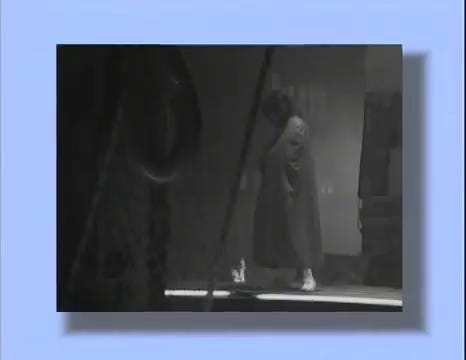
An early example of found footage highlighting Japan’s favorite mode of the style—the faux-documentary, edited and narrated and with interviews and talking heads. Written by Chiaki J. Konaka (Serial Experiments Lain, Digimon Tamers, basically everything I’ve ever loved), Jaganrei acts as an expose of a cursed idol pop song, Konaka’s conspiratorial-minded style creating a palpable paranoia behind the film’s pretty vicious critique of exploitive practices in the entertainment industry. Riveting, smart, and ahead of its time. Plus, the haunted song it all centers around? Absolute banger. The music video that serves as the film’s climax is worth the price of admission alone.
・The Inerasable

Adapting a story from horror queen Fuyumi Ono (Shiki, 12 Kingdoms) and directed by Yoshihiro Nakamura, The Inerasable feels like it was pulled out of the late ‘90s/ early ‘00s, when Japanese horror was at its international peak. Using a mystery procedural as a backdrop to tell a series of terrifying vignettes centering around an apartment complex, The Inerasable relishes in ambiguity and shadow, in the kind of fear you feel waking up at 1am and not being sure if that’s a person or a coat rack standing by your bed. It is also a marvelous example of social horror, where ghosts are turned into vehicles for economic and political unrest, nightmare slowly spreading until it has overtaken all of Japan and the world. Anybody with any love for the elliptical horrors of The Grudge owe themselves to watch this one.
・World Apartment Horror
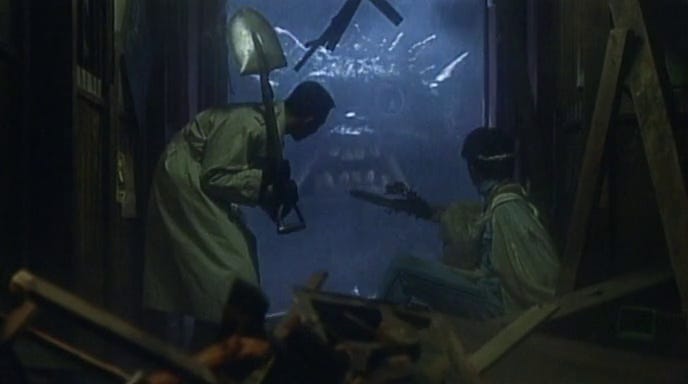
One of the most unbelievable collaborations in film history: story by Satoshi Kon (Perfect Blue), adapted into a screenplay by Keiko Nobumoto (Cowboy Bebop), and directed by Katsuhiro Otomo (Akira)1, World Apartment Horror is a genuine smorgasbord of anime legends coming together to make…a live-action horror comedy celebrating the Tokyo not often seen in film—a beautiful multicultural city packed head to toe with people from all over the world. Less scary than it is charming, World Apartment Horror uses horror iconography and the supernatural as a manifestation of xenophobia and the deep wounds racism perpetuates as a young member of the yazuka tries to drive out the residents of an international dorm protected by something not of this world. Laid-back, funny, and ultimately extremely heart-warming stuff!
・Violence Voyager

Somehow, this might be the most well-known title on this list for an English audience. Violence Voyager is a hallucinatory splatterpunk paper animation (or gekimation as director Uchija calls it) piece of insanity, where cardboard children are shotgunned with guts and acid and transformed through depraved experiments into mechanical flesh creatures begging for death. This is a movie that feels like it shouldn’t exist; endlessly creative and endlessly disgusting, it perfectly captures the spirit of classic horror manga in the vein of Kazuo Umezz, where logic is thrown out the window in favor of an almost stream-of-conscious cavalcade of the worst things you can imagine all happening one after another. A real “I need a shower” kind of movie, but one with genuine pathos, invention, and constant visual surprise.
・Haunted School
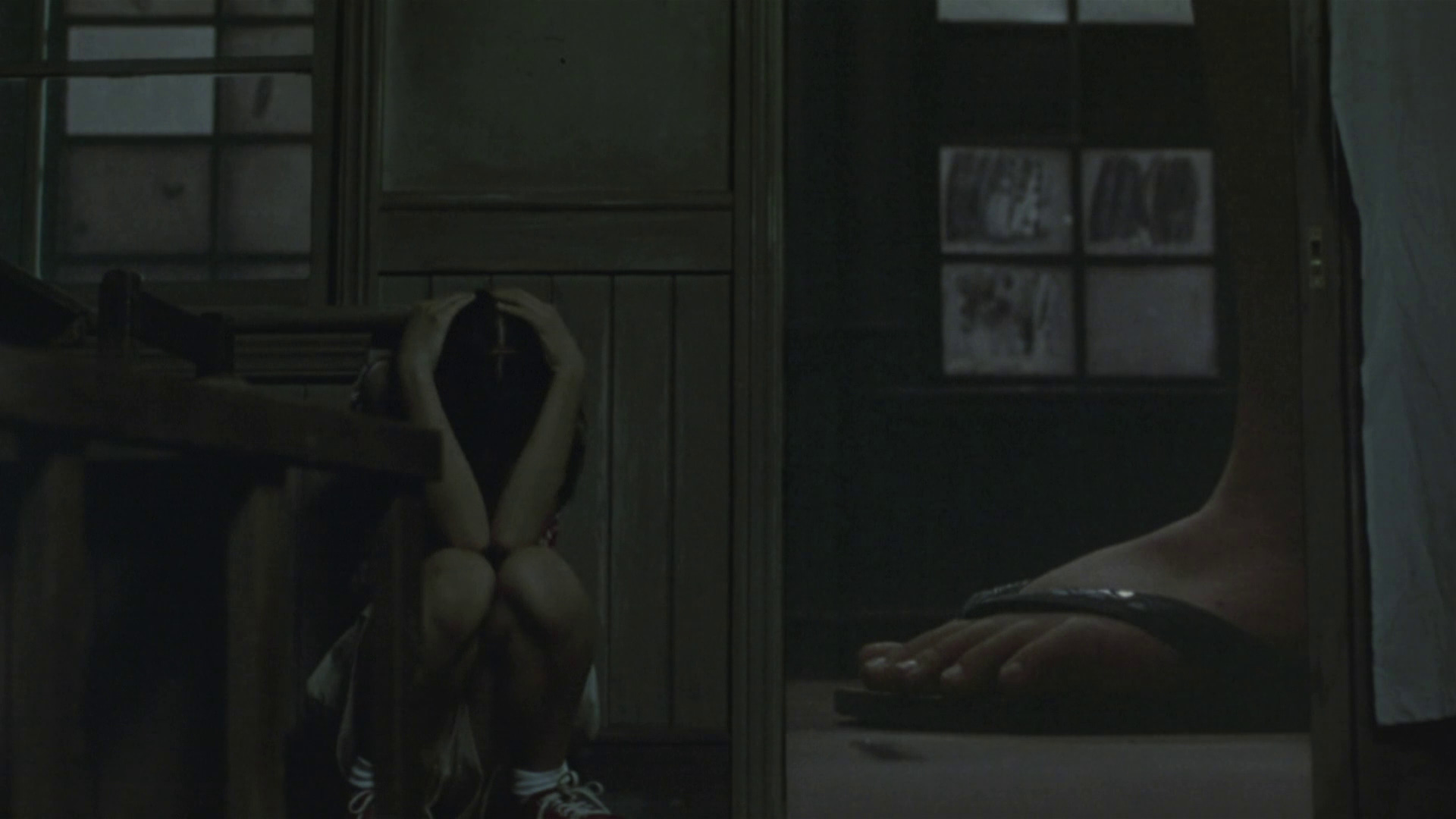
A smash hit on release in Japan, this children’s horror flick should in any just world be considered an absolute Halloween classic world-over. There’s just not much else out there that so perfectly captures the giddy, joyous thrills of trick-or-treating and costumes, horror stories with friends and skeleton decorations at every turn. Exactly what the title implies, Haunted School delights in wonderfully imaginative ghosts and even more wonderfully imagined characters and scenarios (a former biker gang boss mom who summons her crew to beat up incorporeal ghoulies? There is nothing more cinema.) At times genuinely moody, at other points genuinely scary, and always genuinely a ton of fun—Haunted School isn’t one to watch, it’s one to make into a yearly tradition.
・Welcome to the Occult Forest

I feel incredibly vindicated that Koji Shiraishi, a man I’ve been championing relentlessly for more than a decade, has been finding a surge of new international fans this year. His idiosyncratic style of found footage mixed with over-the-top characters and an ever expanding mythology of existentially alarming cosmic nightmares is unlike anything else in the world of horror, and I’m not sure any of his works so concisely represent this than Welcome to the Occult Forest. A non-stop roller-coaster ride that is at turns hilarious and alarming (and often both at once) this is pure, rarefied pop horror. And while you absolutely don’t need to know a thing about Shiraishi’s work to love this out of control live-action cartoon, if you do, then welcome to his Avengers: Endgame—a wild fan-service explosion of callbacks and characters.
・Biotherapy
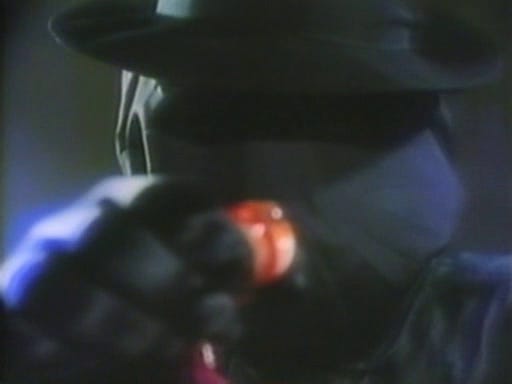
A lean, mean slice of pure, uncut slasher goodness, this near no-budget direct-to-video nasty runs through its story in a clean thirty minutes, burning off all fat in favor of our favorite trashy genre distilled to its muscly essence. Features some incredible, genuinely disgusting effect work, kills as creative as they are gross, and an all-timer of a killer—a mysterious figure dressed in black who emits a blinding blue glow whenever he shows up. The reveal of who they are sends this through the stratosphere for those who love their horror handmade and tasteless.
・Door
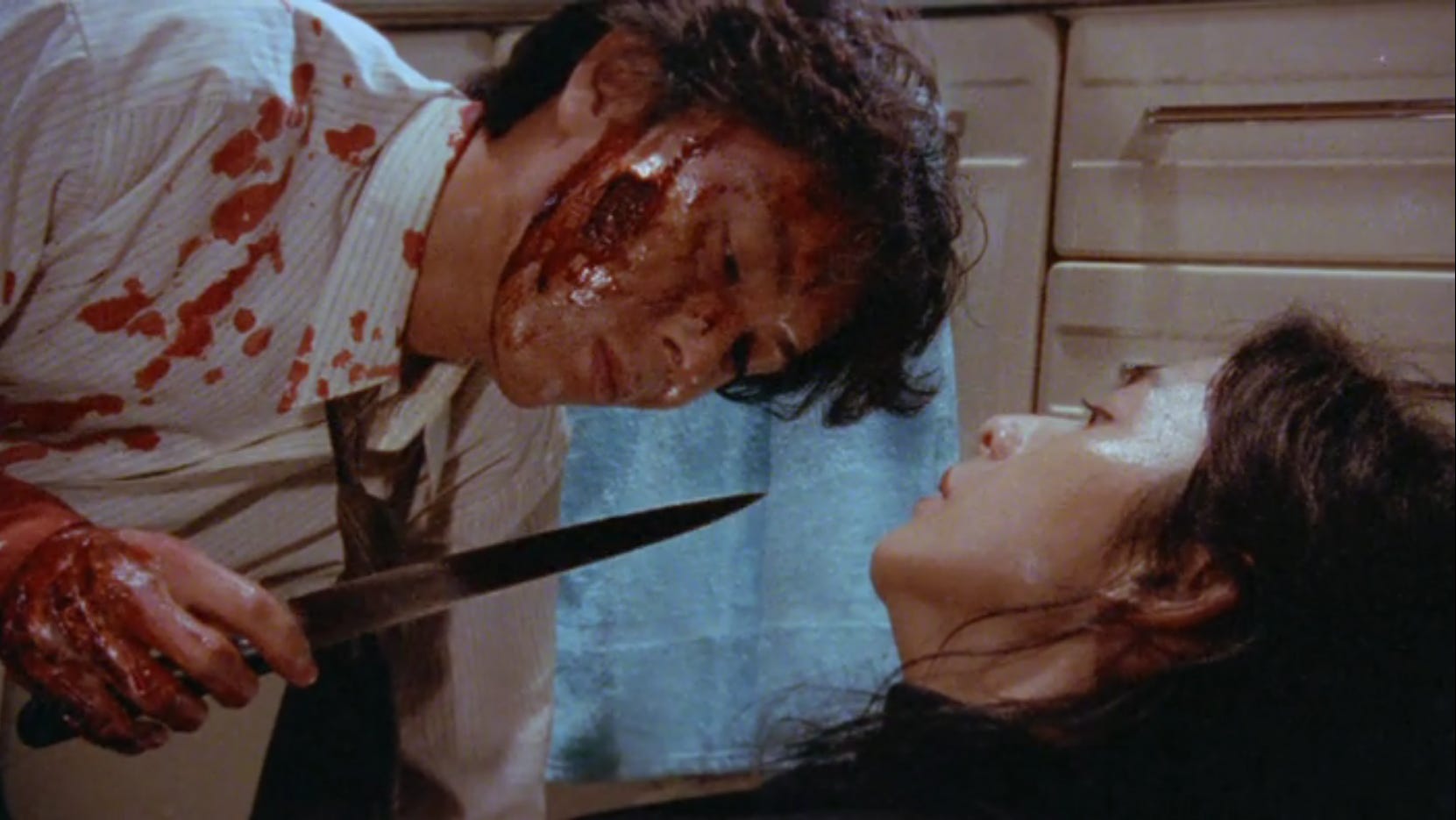
Banmei Takahashi’s Door might be best remembered for having third entry in its series be directed by a young Kiyoshi Kurosawa, but that does a cataclysmic disservice to the original. A wickedly clever and biting satire, Door is packed to the brim with inspired direction, visceral claustrophobia, and a very real sense of mounting madness. Focused on a housewife being stalked by a door-to-door salesmen, the film takes swings at misogyny, rapid modernization, capitalism, and the way companies have tricked us into an isolated prison of materialism, all the while providing a pitch-perfect horror thriller. Also features one of my favorite final shots in horror (I start cheering like my team won the world cup every time) and a jaw-dropping set-piece scene Malignant borrowed from near forty years later.2
・The Boy From Hell
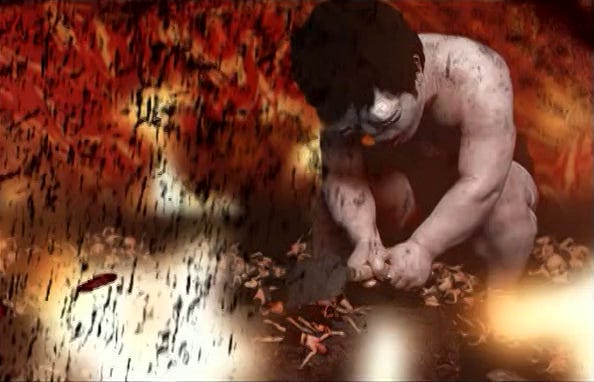
The Boy From Hell is ballistic. There is nothing else that looks like this: an explosion of green screens, filters, overlays, and stock effects smashed into out-there prosthetics and practical gore. Based on a story from legendary horror manga artist Hideshi Hino and directed by a young Mari Asato (Fatal Frame), The Boy From Hell features two incredibly distinct horror voices working in unholy unison; Hino’s materialization of existential madness and Asato’s icy stares into the worst humanity has to offer melting into a bizarre, absurd, feel-bad fever dream about desperation, grief and despair in the face of the loss of a loved one. A quick and wild journey completely its own.
・Legend of the Cat Monster

Nobuhiko Obayashi, director of cult classic House3, gives his take on Sunset Boulevard, resulting in a beautiful and bizarre and incredibly complex dream of a film about film. Full of indelible imagery and ideas—a retired actress living alone on an island surrounded by water shallow enough to walk through, a screenwriter who enters into a master/servant relationship with her and who begins to lose grasp of himself, a house haunted by the ghost of film and records of one’s youth, deaths by movie and movies by death—Legend of the Cat Monster sees one of Japan’s greatest directors explore the horror of creation and his own life as well as anybody ever could.
Music of the Week: Napalm Death Is Dead - Hou-Kai-Kei
All you need really need to know about this release is in the titles. Napalm Death Is Dead. Meat. Fuckin’. Slave. Two tracks of tinnitus inducing noisecore violence sandwiching a near eleven minute monster deconstruction that plays like the recordings of the incidental sounds in the studio—the clicks and clacks and hums— punctuated by second long bursts of ear-splitting sound.
Book of the Week: Yokai Hunter by Daijirou Morohoshi
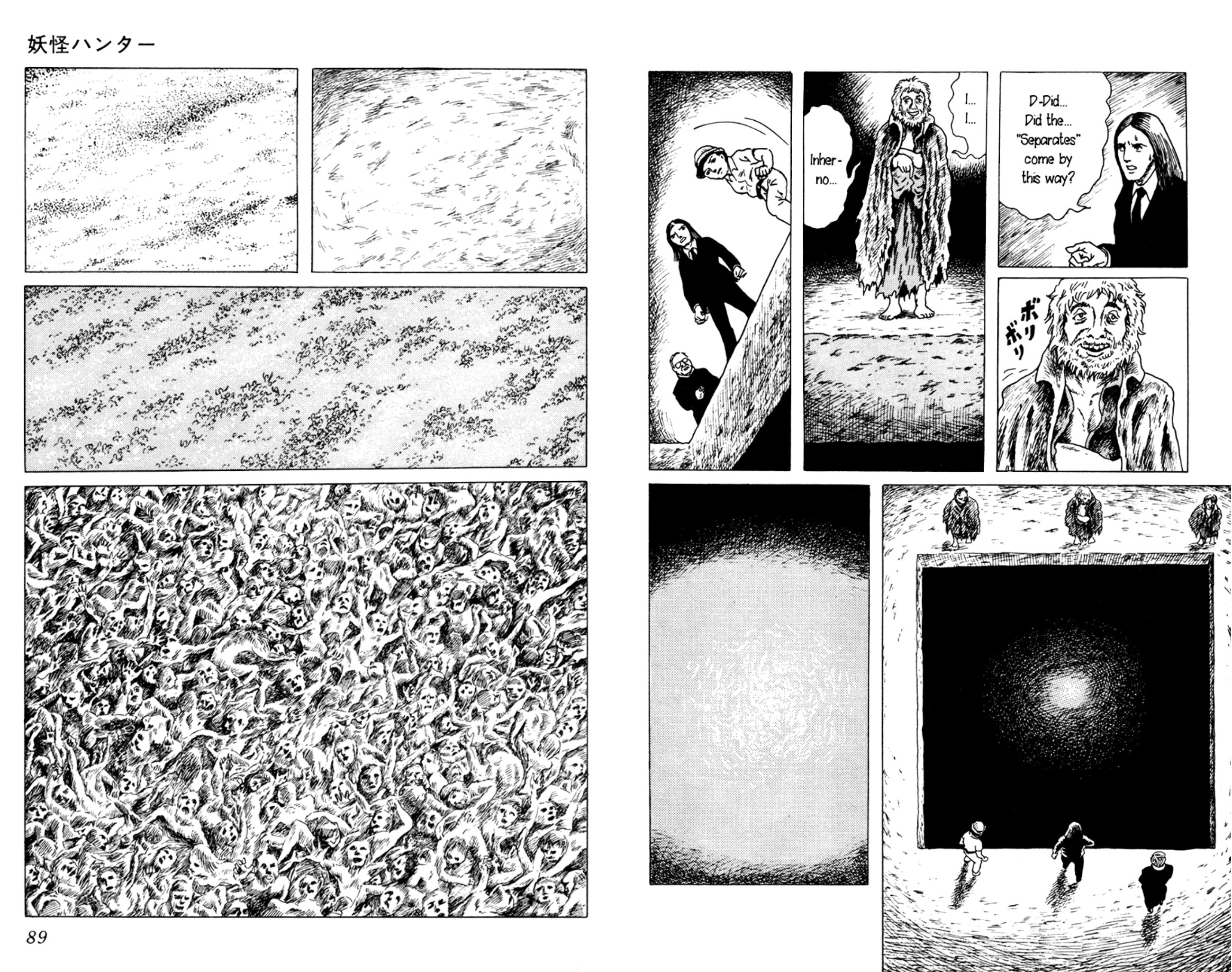
That’s right! I’m adding book recommendations every week now, too! Sometimes it’ll be novels, other times manga, and other other times anything else printed on paper. Hope you enjoy!
And hey, what better (and spookier) start than with Yokai Hunter, the masterpiece of anthropological cosmic horror from the hugely influential legend, Daijirou Morohoshi! For my money you can’t get better than this collection of stories about a traveling archeologist and his encounters with the supernatural. Morohoshi’s vision of apocalyptic horror rooted in our past is deeply intelligent and well-considered on top of inspiring genuine dread in the reader. With incredible art, perfect paneling, and jaw-dropping, world ending conclusions, if you like horror and aren’t a Morohoshi fan, then correct that NOW. Some of my favorite the genre has to offer in any medium.
Movie of the Week: …
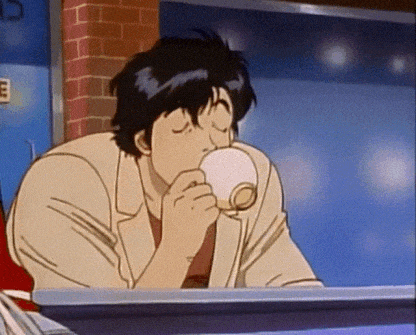
You just got ten of em, gimme a break lmao
Thanks for visiting! If you liked what you read, share it around! It’d make my day :)
Plus future auteur SABU in the leading role and Noboru Shinoda (a Shunji Iwai regular) on cinematography! ↩
Third Window Films (the legends, the kings) are releasing this bad boy soon, too, so keep your eyes peeled! ↩
Among a bunch of other classic movies—he’s my favorite director of all time for a reason! ↩

